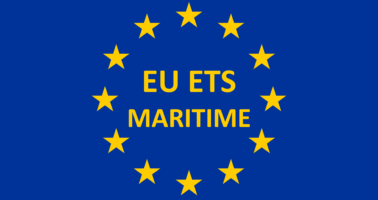The legislative proposal would include emissions from shipping in the current EU ETS. Emissions from the current ETS sectors (including the expansion to the maritime sector) should be reduced by 61 % by 2030, compared to 2005 levels, an increase of 18 percentage points from the current reduction level of 43 %.
On July 14, as part of the package "Fit for 55", the Commission adopted a legislative proposal for the review of the EU Emissions Trading System (ETS), to align it with the target of a 55% reduction of EU net greenhouse gas (GHG) emissions by 2030, compared to 1990 levels. This target is part of the European Climate Law (see separate file), and was set on the basis of the Commission's climate target plan which was presented on 17 September 2020 ( see separate file).
The EU ETS was launched in 2005 and covers around 45% of EU greenhouse gas emissions. The latest revision of the EU ETS Directive, adopted in 2018, sets the total amount of allowances for phase 4 (2021-2030), in line with the previous EU emissions reduction target (reduction 40 % below 1990 levels by 2030).
The legislative proposal would include emissions from shipping in the current EU ETS. Emissions from the current ETS sectors (including the expansion to the maritime sector) should be reduced by 61 % by 2030, compared to 2005 levels, an increase of 18 percentage points from the current reduction level of 43 %.
10 KEYS TO UNDERSTANDING EU ETS
1) The EU ETS system, which limits European CO2 emission rights (EUA), has worked for many industries and now shipping will be incorporated into the system
2) The number of EUAs issued and the market mechanism determine their price. As the US declines year after year, the market price will tend to increase, if demand does not decline fast enough.
3) Currently (September 2021) EUAs are trading at € 60 / t, which is equivalent to an increase of € 200 / t in the price of conventional marine fuel.
4) The ETS is based on the existing MRV reporting system. It applies to all vessels, of any flag, with more than 5,000 GT that carry out commercial activities in Europe.
5) The entry of the maritime sector into the system will be done gradually. Starting in 2023, with 20% of total emissions, progressively increasing to 100% starting in 2026
6) Ships are responsible for 100% of their CO2 emissions in EU ports and navigating between them, and 50% when entering or leaving the EU.
7) It only applies to CO2 emissions between the tank and the wake (T2W), upstream emissions or any other type of emissions, for example methane, are not considered. In this respect it differs from FUEL EU.
8) It is not a pay-as-you-go system. Operators are obliged to deliver the emission rights of the previous year before April 30 of the following year.
9) Holders are free to purchase EUAs on the market, at annual EU auctions or from other shipping companies. Trading, hedging and speculation with emission rights is foreseen.
10) Failure to comply is costly, in addition to delivering the necessary EUAs, a penalty of € 100 / t will be imposed. Two consecutive years of non-compliance can lead to a boat ban in EU waters
Text of the proposed Directive:
Commission working document:
Impact study of the measure:
Impact study continuation:
The proposal would establish a new, separate emissions trading system for emissions from fuels used in road transport and in buildings. This new system would come into operation from 2025 and would apply to fuel suppliers rather than to households and car drivers. The indirect social impacts of rising fuel prices for road transport and heating are addressed through a legislative proposal for a Social Climate Fund (see separate file).
The Commission presented separate legislative proposals to strengthen the ETS Market Stability Reserve and include aviation in the ETS.
A public consultation on the initial impact assessment (roadmap) for the review of the ETS was carried out between 13 November 2020 and 5 February 2021. In the European Parliament, the proposal has been referred to the Committee on the Environment, Public Health and Food Safety. Environment ministers had a first exchange on the "Fit for 55" package at an informal meeting on July 20, 2021

